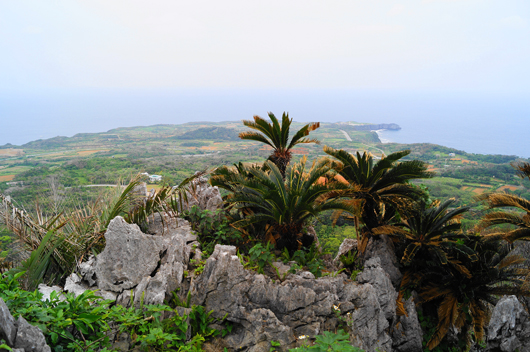< I looked at Daisekirin mountain from Hedo cape. It is
distant place left-hand side. >
I traveled through
Okinawa and looked at main tourist resorts in early April.
Although it was overcast weather, my travel was very
comfortable.
I will introduce the
nature and sightseeing of main Okinawa island.
4月の始め、沖縄を縦断し、主要な観光地を見ました。
天気は曇りがちだったが、過ごしやすかった。
沖縄本島の自然と観光を紹介します。
< A red frame is main Okinawa island. A right frame is the
enlargement. A black frame is roughly Okinawa prefecture region. A yellow frame
is the place that I introduce this time. >
An east-west width of
Okinawa Prefecture is about 1000 km, and it consists of islands of 160.
The maximum distance in
a straight line of main Okinawa island is 107 km.
It is a subtropical
climate since it closes on Taiwan.
In ancient times,
Okinawa was a maritime state.
Right now, it is a
leisure island of the tropical and a lot of military base.
It is wonderful and
mysterious.
沖縄県の広さは東西に約1000kmで、160の島からなります。
本島の最大直線距離は107kmで、台湾に近く亜熱帯気候です。
沖縄は、南国のレジャー島、古くは海洋国家、また基地の県でもあり、不思議な趣があります。
< Hedo cape >
When I stood on the
cape, I felt a little lonely like standing on the farthest edge.
The plants had covered
barely the ground generated by coral reef.
岬は寂寥感の漂う最果ての感がありました。
珊瑚礁が隆起した大地をかろうじて植物が覆っていました。
< Karst landscape, The
strangely shaped rocks in Daisekirin mountain and banyan tree >
Here remains well a
subtropical jungle even in the main Okinawa island, and it is called Yanbaru.
Banyan tree and cycad had grew up among sharped limestone, it
gave me an impressed of being the tropical zone.
ここは沖縄本島でも亜熱帯の自然がよく残っており、山原(ヤンバル)と呼ばれる。
尖った石灰岩の合間をぬってソテツ類やガジュマルが伸び熱帯を感じさせる。
< the view of Hedo cape from the summit. The summit continued into the
far distance. >
In a myth of Ryukyu, this
mountain was a sacred spot that God came down first.
There were many Utaki
of small shrine throughout the mountain, and it had been made by setting some
stones.
Since this area is made
of a huge base rock, it is unsuitable to grain cultivation. But the cultivation
of pineapple etc. is performed.
The line of coral reef
that has foamed up white waves was running in parallel to the seashore.
Truly, it was an island
of the tropical, and it gave me the impression of ancient Ryukyu.
Next time, I look at
nature of central part in the main Okinawa island.
この山は、琉球の開闢神話で、神が最初に降り立った聖地だとされる。
山のいたる所に石組みした小さな祠である御嶽(うたき)があった。
この地域は巨大な石灰岩や火成岩で出来ており、穀物栽培には不適だが、パイナップル等の栽培が行われている。
海岸に並行して白波が立つ珊瑚礁のリーフが走っていた。
まさに南海の島、いにしえの琉球を感じる一時でした。
次回は、本島中部の自然を紹介します。






























